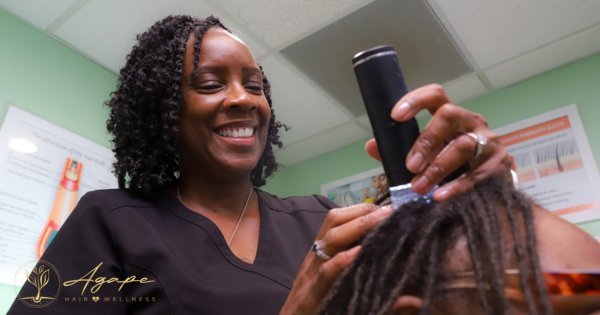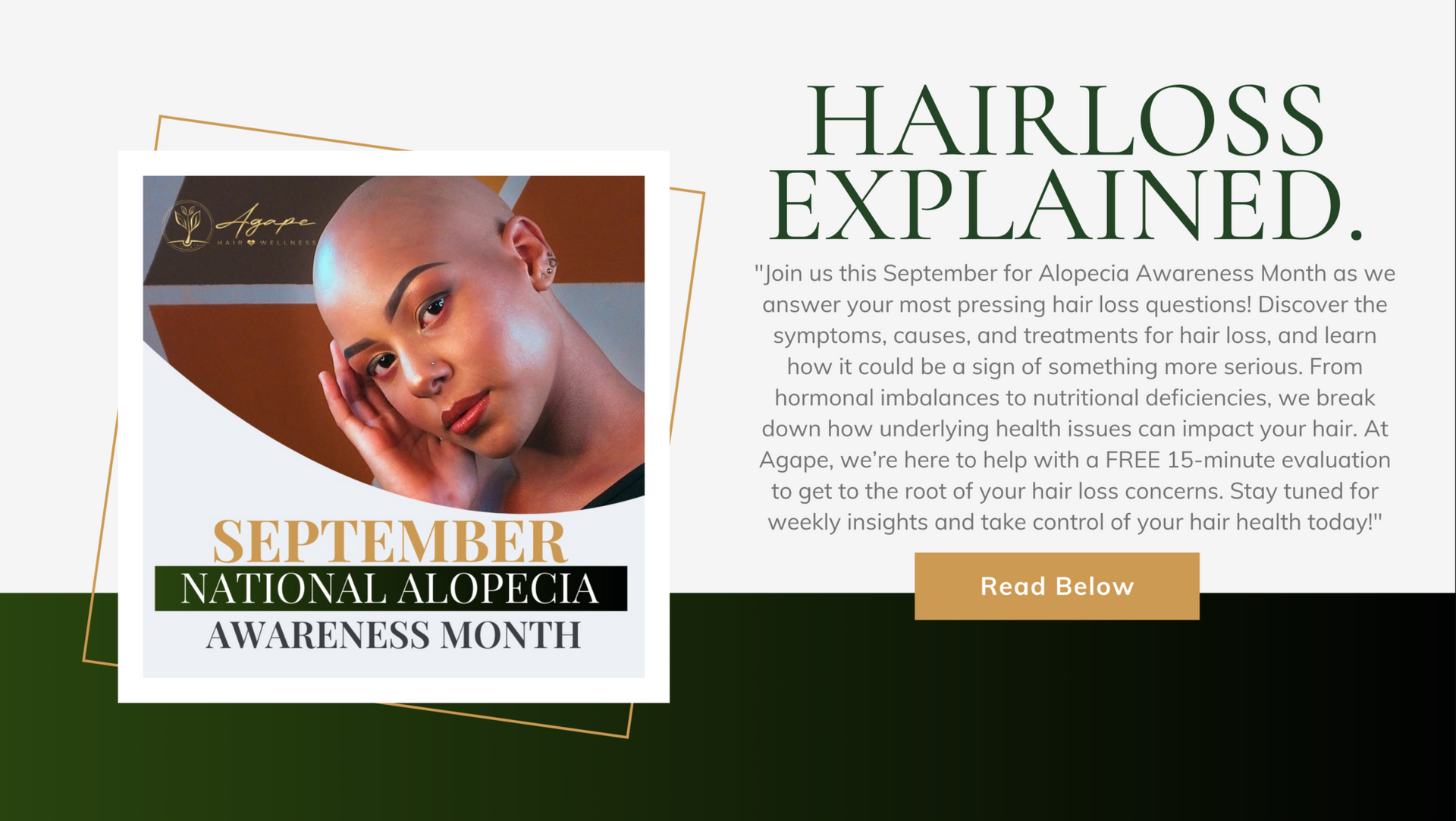Are You Thinning? You May Be Experiencing Female Pattern Hair Loss
WHAT IS IT?
Female pattern hair loss (FPHL) is the most common type of hair loss among adult women
WHO IS AT RISK FOR FPHL
The risk for FPHL increases as we age, onset usually peaks in both the 30’s and 50’s. Risk is higher among those with a family history of hair loss. A related, yet clinically different disorder, early-onset FPHL can occur in girls of school age and even younger. In this blog, we will focus on adult-onset FPHL.
WHAT ARE THE SYMPTOMS OF FPHL?
FPHL looks like:
Gradual thinning at the top of the scalp, usually begins at the center and proceeds over time across the top of the head but rarely causing complete baldness. The loss of hair volume may go unrecognized for many years. Typically, the frontal hairline remains intact.
FPHL feels like:
There is rarely any discomfort from FPHL.
Deeper than hair:
FPHL can be associated with hormone imbalances which may point to serious kidney and ovarian disorders. Psychological stress from FPHL can be significant and life-altering. A recent study revealed that hair loss can result in distress manifested in lowered self-esteem, guilt, and disturbances in sleep, daily functioning, and social activities.
WHAT CAUSES FPHL?
Modern research has yet to furnish a complete understanding of the factors that cause FPHL. There are clear genetic influences; more recent studies have identified several chromosome variants that are linked to the disease. The level of male hormones in the bloodstream also seems to play a role in the hair follicle regression typically found in FPHL. More research is needed to fully understand this disease.
WHAT CAN BE DONE ABOUT FPHL?
Solutions for FPHL depend on the stage of the disease.
The right diagnosis is the KEY! The signs and symptoms of FPHL can mimic those of other hair loss disorders. See a certified trichologist or dermatologist who specializes in hair loss to properly identify any hair loss issue.
Home-based remedies:
Minoxidil solution can be purchased OTC and applied to the scalp. It is FDA-approved and research studies have documented it’s efficacy. Keep in mind that there can be side effects and treatment must be continued for life to maintain results.
Low-level laser therapy bands, combs, caps, and helmets can be purchased online. These devices have been FDA-cleared and have demonstrated significant hair regrowth in numerous research studies.
Pharmaceutical treatments for FPHL include Spironolactone [CaroSpir, Aldactone], Finasteride [Propecia, Proscar], Cyproterone acetate [Androcur, Diane] and Flutamide [Eulexin]. These are potent hormone disruptors that alter the level of male hormones in the bloodstream by blocking receptors, preventing testosterone conversion, and/or reducing male hormone production. Each may have significant side effects (including birth defects if taken during pregnancy) and must be prescribed by a medical provider.
Concealment/Camouflage
Volumizing hairstyles, powders, sprays, and foams may give thinning hair more body and disguise bald patches.
Cranial prosthetics (“medical” wigs and hairpieces) can be customized to be integrated into existing hair to provide coverage, add length and volume or be custom fit as a complete hair replacement. Some may be covered by medical insurance plans.
Hair accessories such as scarves, turbans, hair clips, and hats may be helpful.
Surgical treatments:
Hair transplant using techniques such as micro-grafting, mini-grafting, and follicular unit transplantation.
Scalp reduction involves surgical removal of the central bald area of the scalp, bringing the areas that still have hair closer together.
Transplantation and scalp reduction may be effective; however, such options are expensive, painful, and require extended follow-up and recovery times. Both procedures may provide less than optimal results over time due to the underlying condition and will not likely be covered by insurance plans.
Experiencing symptoms of FPHL? DO NOT WAIT!
Get help from our certificated trichologist (hair loss specialist)
REFERENCES:
- Dinh QQ, Sinclair R. Female pattern hair loss: current treatment concepts. Clin Interv Aging. 2007;2(2):189-199.
- Jungyoon Ohn, Ho-Young Son, Da-Ae Yu, Min Su Kim, Sijin Kwon, Won-Seok Park, Jong-Il Kim, Ohsang Kwon, Early onset female pattern hair loss: A case–control study for analyzing clinical features and genetic variants, Journal of Dermatological Science, Volume 106, Issue 1, 2022, Pages 21-28, ISSN 0923-1811,
- Khatu SS, More YE, Gokhale NR, Chavhan DC, Bendsure N. Platelet-rich plasma in androgenic alopecia: myth or an effective tool. J Cutan Aesthet Surg. 2014;7(2):107-110. doi:10.4103/0974-2077.138352
- Ramos PM, Miot HA. Female Pattern Hair Loss: a clinical and pathophysiological review. An Bras Dermatol. 2015;90(4):529-543. doi:10.1590/abd1806-4841.20153370












